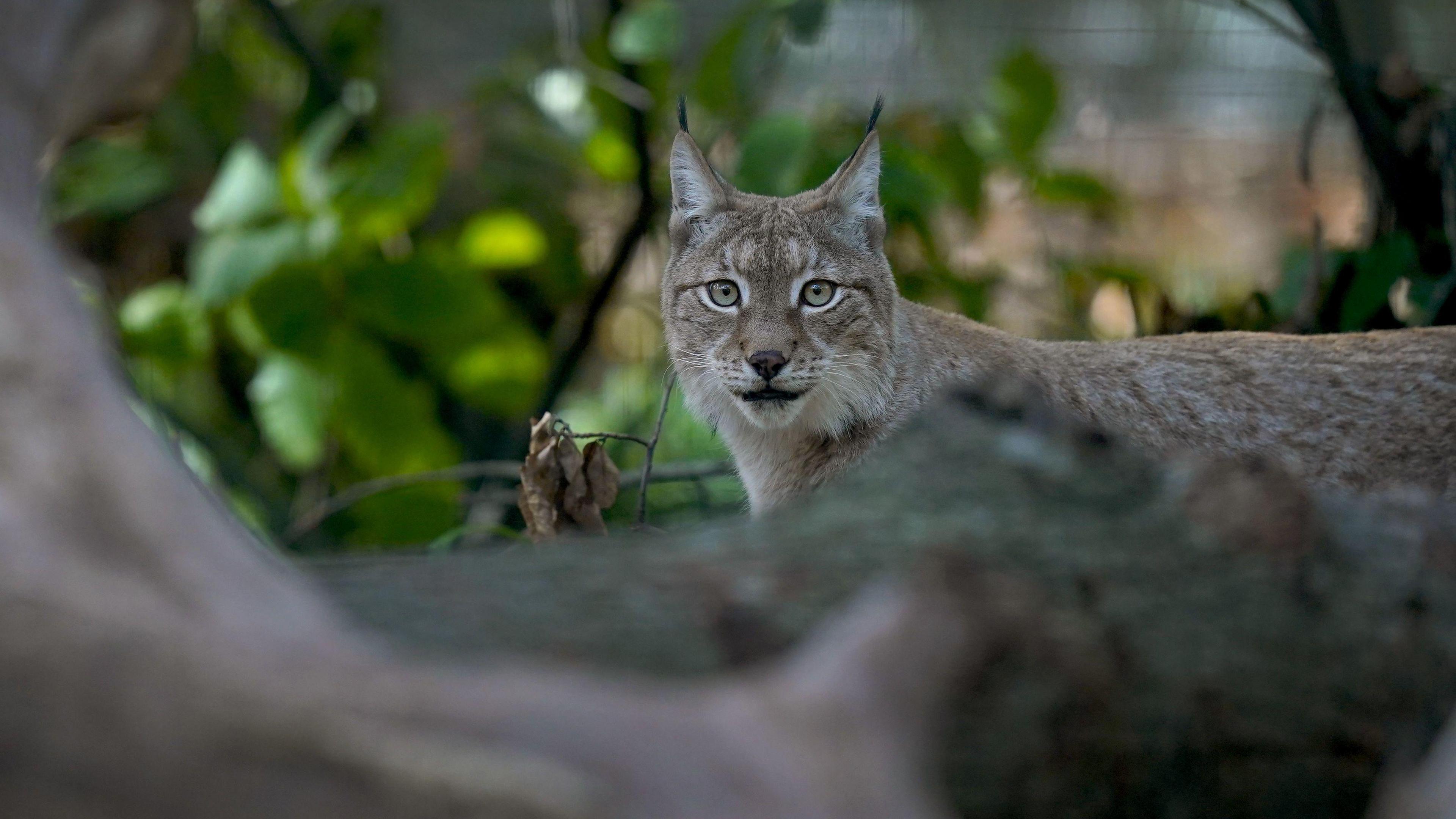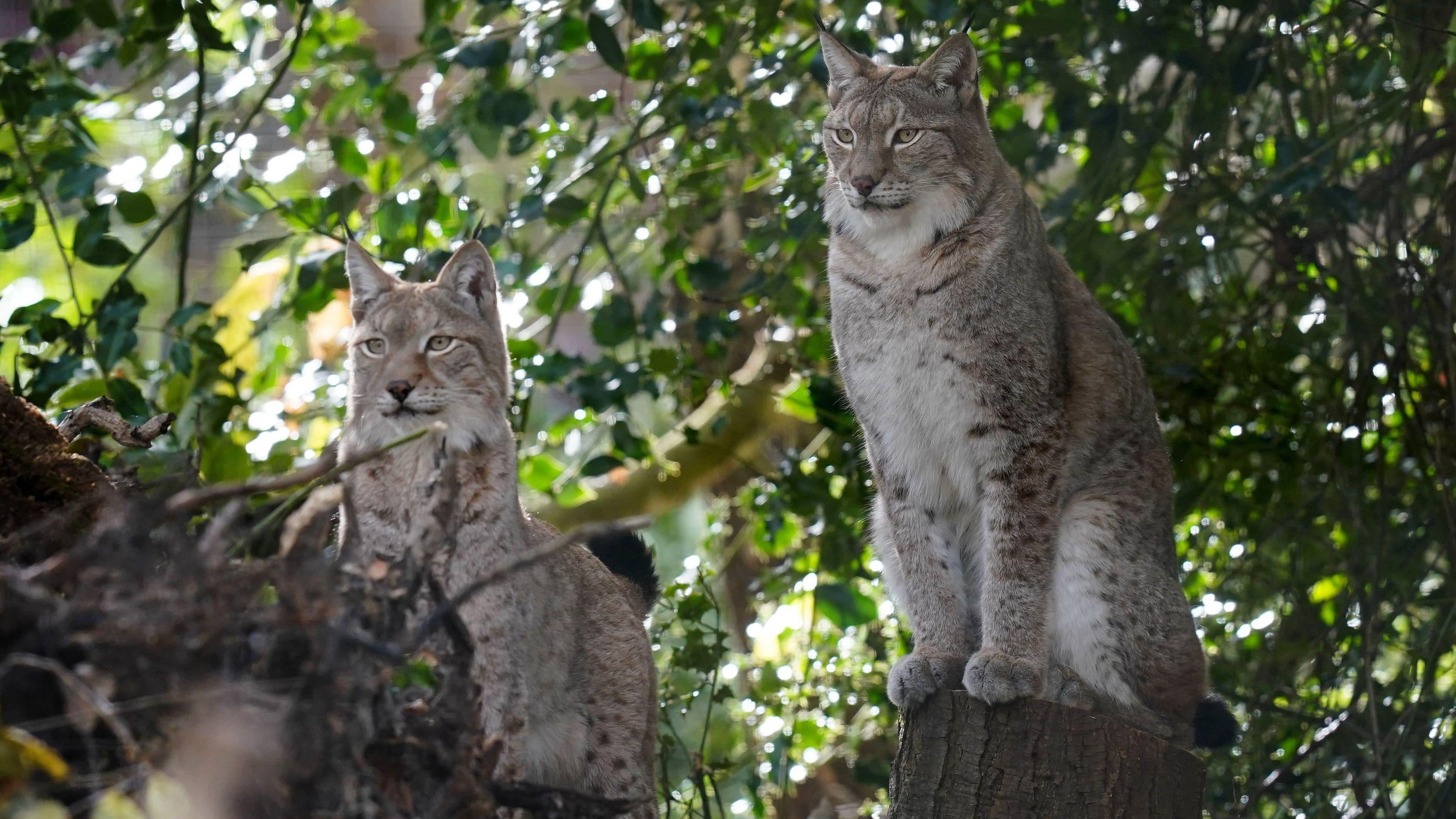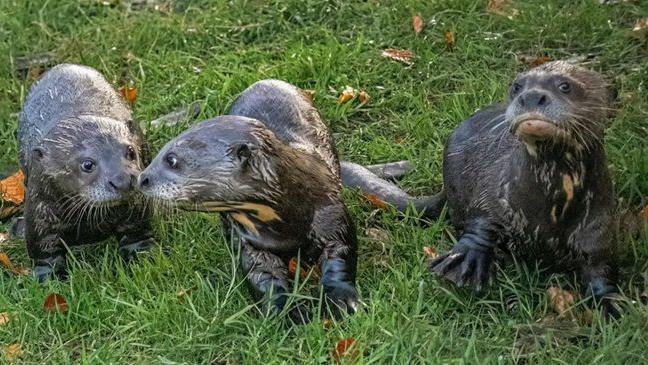Eurasian lynx check out their new home in Kent

Meet Torridon and Flossie
- Published
Eurasian lynx were once a common sight around Britain but they're thought to have disappeared from the wild hundreds of years ago.
The Wildwood Trust is a charity trying to bring back Britain's lost species - including lynx.
As part of their mission, they've introduced two lynx - named Torridon and Flossie -to a new state-of-the-art enclosure in Kent.
They hope it's a step towards eventually reintroducing the Euroasian lynx back to the wild in Britain's landscape.
Related stories
Could lynx be coming back to Scotland?
- Published19 January 2021
Lynx and wild horses among animals being reintroduced in Spain
- Published20 October 2022
Elk could be back in UK after 3,000 years
- Published13 May

Flossie is settling into her new home
Despite the Eurasian lynx being a native British predator, they are thought to have disappeared from our land in the medieval times due to habitat loss and hunting.
But experts say reintroducing the species back to the wild could help the natural ecosystem.
Paul Whitfield, director general of Wildwood Trust, said:
"The idea that lynx could once again roam our wild places is not only feasible but incredibly exciting - and something we should all celebrate."
Wildwood Trust reintroduced a herd of bison to Kent in 2022 and they are said to be thriving.
It's hoped habitats could be found for the lynx to roam freely in Northumberland, Cumbria and southern Scotland, but there's still work to be done.
For now, the new enclosure will help the species breed.
What is the Eurasian lynx?

The Eurasian lynx is one of four lynx species.
It's a medium-sized cat which means it's bigger than your average house cat but smaller than a tiger.
They're not generally considered to be a threat to humans, but they do hunt animals like deer, birds, rabbits and mice.
Sally Holt, head of carnivores and small mammals at Wildwood, said:
"While some people misunderstand lynx and how they live, in reality, lynx are shy, solitary animals that avoid human contact and play an important role in keeping ecosystems healthy.
"Part of our job at Wildwood is to help people see the lynx for what it truly is - a quiet, elusive predator of deer that once helped balance our natural landscapes."
More on British wildlife
- Published6 December 2024

- Published20 October


